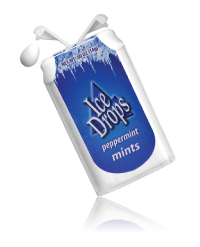Bad breath, medically called [kastooltip msg=”Halitosis” tooltip=”halitosis /hal·i·to·sis/ (hal″ĭ-to´sis) offensive odor of the breath. hal·i·to·sis (h l -t s s). n. The condition of having foul-smelling breath”], can result from poor dental health habits and may be a sign of other health problems. Bad breath can also be made worse by the types of foods you eat and other unhealthy lifestyle habits.
How Does What You Eat Affect Breath?
 Basically, all the food you eat begins to be broken down in your mouth. As foods are digested and absorbed into your bloodstream, they are eventually carried to your lungs and given off in your breath. If you eat foods with strong odors (such as garlic or onions), brushing and flossing — even mouthwash — merely covers up the odor temporarily. The odor will not go away completely until the foods have passed through your body.
Basically, all the food you eat begins to be broken down in your mouth. As foods are digested and absorbed into your bloodstream, they are eventually carried to your lungs and given off in your breath. If you eat foods with strong odors (such as garlic or onions), brushing and flossing — even mouthwash — merely covers up the odor temporarily. The odor will not go away completely until the foods have passed through your body.
Why Do Poor Habits Cause Bad Breath?
If you don’t brush and floss your teeth daily, food particles can remain in your mouth, which promotes bacterial growth between teeth, around the gums, and on the tongue. This causes bad breath. In addition, odor-causing bacteria and food particles can cause bad breath if dentures are not properly cleaned.
Smoking or chewing tobacco-based products can also cause bad breath, stain teeth, reduce your ability to taste foods, and irritate the gums.
What Health Problems Are Associated With Bad Breath?
Persistent bad breath or a bad taste in your mouth may be warning signs of gum (periodontal) disease. Gum disease is caused by the buildup of plaque on teeth. The bacteria cause toxins to form in the mouth, which irritate the gums. If gum disease continues untreated, it can damage the gums and jawbone.
Other dental causes of bad breath include poorly fitting dental appliances, yeast infections of the mouth, and dental caries.
The medical condition dry mouth (also called [kastooltip msg=”Xerostomia” tooltip=”xerostomia /xe·ro·sto·mia/ (zēr″o-sto´me-ah) dryness of the mouth due to salivary gland dysfunction.”]) can also cause bad breath. Saliva is necessary to moisten and cleanse the mouth by neutralizing acids produced by plaque and washing away dead cells that accumulate on the tongue, gums, and cheeks. If not removed, these cells decompose and can cause bad breath. Dry mouth may be caused by the side effects of various medications, salivary gland problems, or continuous breathing through the mouth.
Many other diseases and illnesses may cause bad breath. Here are some to be aware of: respiratory tract infections such as pneumonia or bronchitis, chronic sinus infections, postnasal drip, diabetes, chronic acid reflux, and liver or kidney problems.
What Can I Do to Prevent Bad Breath?
Bad breath can be reduced or prevented if you:
- Practice good oral hygiene. Brush twice a day with fluoride toothpaste to remove food debris and plaque. Brush your teeth after you eat (keep a toothbrush at work or school to brush after lunch). Don’t forget to brush your tongue, too. Replace your toothbrush every 2 to 3 months. Use floss or an interdental cleaner to remove food particles and plaque between your teeth once a day. Dentures should be removed at night and cleaned thoroughly before being placed in your mouth the next morning.
- See your dentist regularly – at least twice a year. He or she will conduct an oral examination and professional teeth cleaning and will be able detect and treat periodontal disease, dry mouth, or other problems that may be the cause of bad mouth odor.
- Stop smoking/chewing tobacco-based products. Ask your dentist for tips on kicking the habit.
- Drink lots of water. This will keep your mouth moist. Chewing gum (preferably sugarless) or sucking on candy (preferably sugarless) also stimulates the production of saliva, which helps wash away food particles and bacteria.
- Keep a log of the foods you eat. If you think the foods that you eat may be causing your bad breath, record what you eat. Bring the log to your dentist to review. Similarly, make a list of the medications you take. Some medications may play a role in creating mouth odors.
Who Treats Bad Breath?
In most cases, your dentist can treat the cause of bad breath. If your dentist determines that your mouth is healthy and that the odor is not of oral origin, you may be referred to your family doctor or to a specialist to determine the odor source and treatment plan. If the odor is due to gum disease, for example, your dentist can either treat the disease or refer you to a periodontist, a dentist who specializes in treating gum conditions.
What Products Can I Use to Eliminate Bad Breath?
You can buy a number of mouthwashes over-the-counter that claim to eliminate bad breath. However, keep in mind that many of these mouthwashes generally provide only a temporary way to mask unpleasant mouth odor. There are, however, several antiseptic mouth-rinse products available that instead of simply masking breath odor kill the germs that cause bad breath. Ask your dentist about which product is best for you.
For a quick easy cover-up when you are unable to treat the cause of your bad breath, breath mints, breath drops or breath sprays can be a safe and effective method of getting you through until you address your bad breath.
